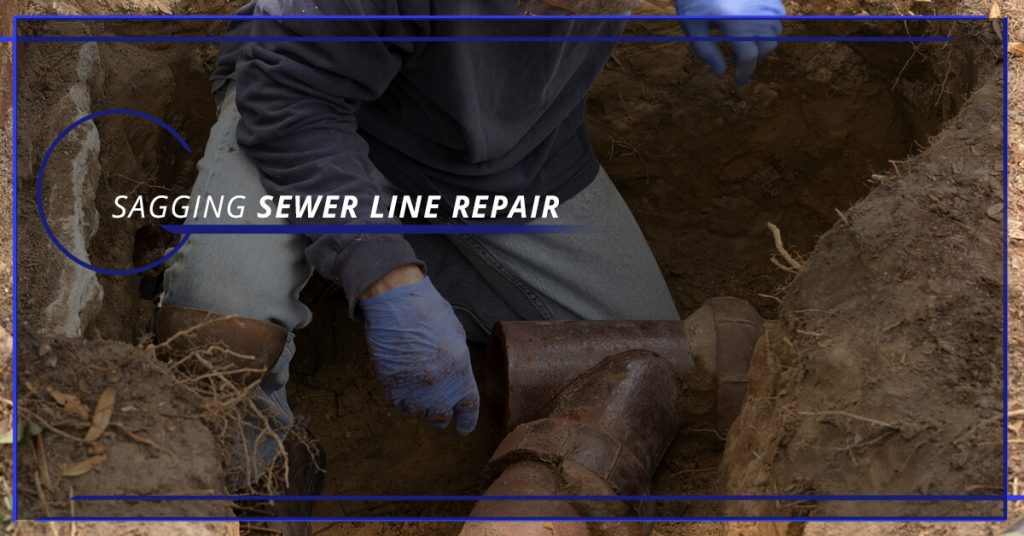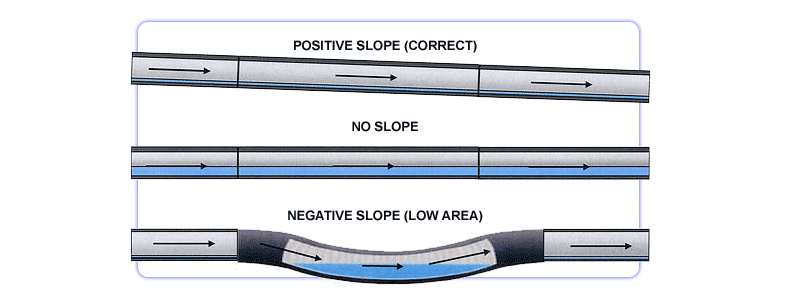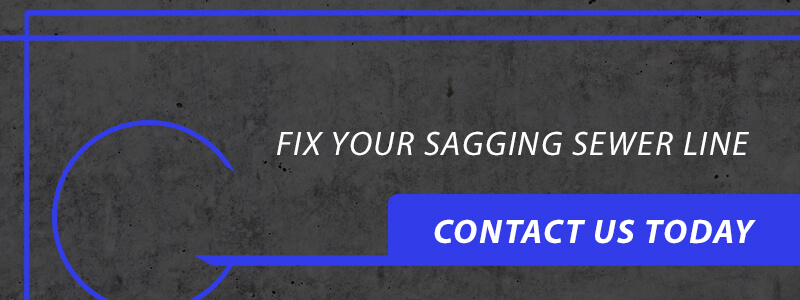Sagging Sewer Line Repair
Sagging Sewer Line Repair
Home »
GET STARTED
OUR SERVICES

Are you experiencing sewage problems? It’s possible that you’re experiencing a sagging sewer line. This is a common problem that afflicts people’s sewer systems, and fortunately, there are several different ways to approach the problem.
At Sewer Solutions, we’ve handled more cases of sagging sewers than we can count. In this blog post, we’ll look at what a sagging sewer even is, the problems it creates, and what you can do to fix it. Keep reading if you want to find out how to keep your sewer lines problem-free!
What Is a Sagging Sewer Line?
A sagging sewer line is a pipe that, for whatever reason, has developed a low point or a bend.
Imagine taking a hard spaghetti noodle and laying it over a trench. Regardless of where it’s placed, it will remain perfectly straight. However, if you were to bake the noodle and make it soft, it would dip into the trench, creating a bend. This is similar to what happens to certain sewer pipes — a downward bend occurs after years of use, and this can have adverse effects on your sewage system.

The problem is that a sagging pipe often disrupts the flow of liquid through the pipe because there isn’t enough momentum to overcome the slope.
Ideally, pipes are supposed to be installed at an ever-so-slight decline, which allows gravity to do all the work. At a slope, water will always flow down the pipe, even if it’s low-pressure. If the pipe is completely straight, sewage can often make its way through, but only if it’s being pushed from its source. But when the pipe has a belly, liquid tends to get stuck, and that can render your sewer line useless, or at least make it more inefficient.
What Causes a Sagging Sewer Line?
The biggest reason why pipes end up sagging doesn’t have anything to do with the pipes themselves, but rather the materials that surround them.
Pipes are installed in the earth, and it’s quite important that, during the installation process, ideal conditions are in place in regards to the dirt and bedding. Specifically, the earth bedding should be arranged in such a way that it’s extremely hard and firm — unlikely to shift or sink. Secondly, this is the stage in which the slope is created. If careless sewer line professionals don’t establish a proper downward slope, the sewer line installation will have problems from day one. That’s one reason why it’s so important to find a sewer line repair and replacement company that you can trust.
However, sagging sewer lines aren’t always the result of a botched job. The earth is quite content to move without consulting us first, and sometimes certain conditions that are out of our control can cause shifts in the ground. Even the most expertly installed pipes aren’t immune to unforeseeable geological activity, which means that sometimes a sagging pipe is the result of nothing more than bad luck.
How Do You Diagnose a Sagging Sewer Line?
The easiest way to know something is wrong is by just living your day-to-day life. When your sewer system has a problem, you’ll notice in one way or another. There are various signs to look out for which are indicators of failing sewer systems and seeing any one of those can tip you off that you need to have your system inspected.
In the case of a sagging sewer line, the first and most obvious system is sewer backup. If you use your kitchen or shower and you see water rise up out of the drain, it’s a solid indicator that your sewer line is backed up, which is a common problem in sagging sewer lines due to the sediment buildup in the belly.
Unfortunately, there’s not much you can do on your own once you know there is a problem. That’s why you should give your local sewer line professionals a call — the best way to diagnose a sagging sewer line is via video pipe inspection, an innovative procedure in which a camera is laced through your sewer line, allowing experts to diagnose problems without having to dig up a single inch of your land.
Sagging Sewer Line Repair
If you don’t know much about sewer line repair, you might not know of the many incredible methods that currently exist to replace or repair pipes. For the uninitiated, it’s hard to imagine any way of solving the problem without digging up a trench and replacing the pipe by hand.
Fortunately, there are viable solutions which don’t require a pit to be dug. These are known as trenchless repair methods — sewer line repair and replacement jobs that require minimal excavation. Unfortunately, bellied pipes can’t always be fixed with trenchless methods because sometimes it simply comes down to the erosion of the surrounding dirt and gravel, but in the majority of cases, we’ve been able to work out solutions that have a minimal impact on the yard.
Sewer Line Replacement and Repair in Seattle
We’ve been carrying out quality sewer line repair and replacement jobs in the greater Seattle area for many years, and there’s no job that has proven too difficult for us to handle. Bellied pipes are an extremely common issue, so you can bet that we’ll know exactly how to handle your situation.
Sewer Solutions has served clients all over Seattle, and we’re extremely familiar with the conditions of the earth and the factors that are unique to Washington which would influence the way in which a job must be approached. Contact us today!
$200 VALUE SPECIAL OFFER
Applies to sewer line repairs requiring digital camera diagnosis.


